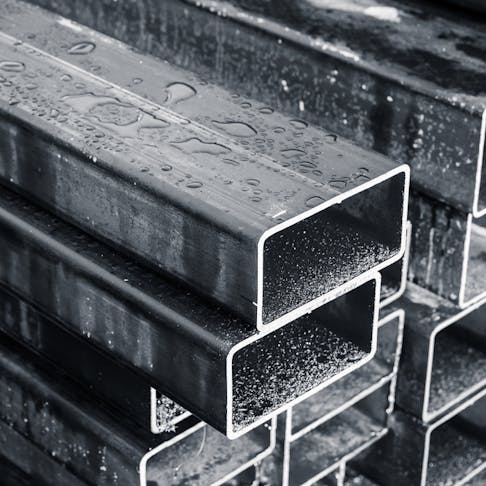You don’t have to be an engineer to have heard of steel—this material is everywhere. It’s useful for heavy-duty construction tasks, and versatile enough to be made into cookware, too. This article will talk about steel’s features and uses, as well as the different types.
What is Steel?
Steel is an iron and carbon combination with up to 2% carbon—but no more. Other elements can be (and are very often) added to the iron top of carbon, like manganese, chromium, and nickel, but in very small amounts to give it different benefits. Steel’s iron levels can reach 99% for carbon steel and mild steel. For the likes of stainless steel, like 304, you’ll find a lower percentage sitting around 70% iron. Other elements like cadmium, boron, and molybdenum are common additions, too. The trace amounts of different alloying elements are part of how steel is categorized and graded. Steel will last, on average, 100 years and it’ll stay rigid without swelling or creeping.
Steel is a strong metal that keeps its strength even under tension and heavy loads. It’s usable for a very long list of products and applications—and it’s a favorite of our customers at Xometry. Steel came to be in India thousands of years ago in 400 BCE and it has since developed into an alloy with numerous elements that make it the durable and common material manufacturers choose to use again and again. Here’s what it looks like:
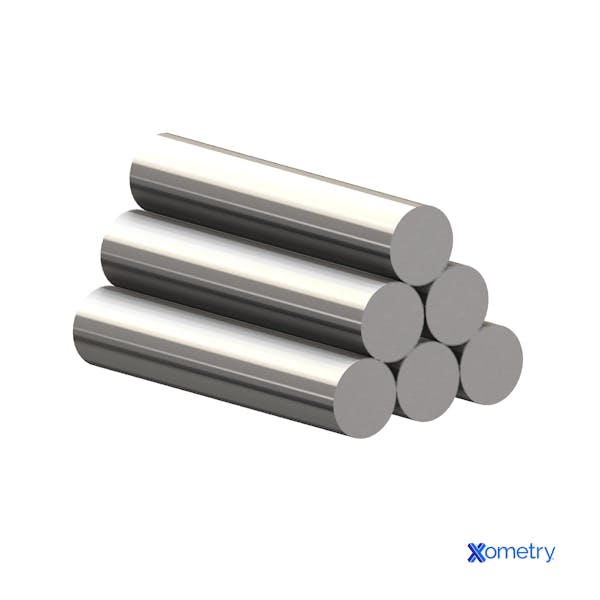
Steel rods
Most steel types are machinable—with free-cutting steels being the easiest to work with—and easy to weld, too. Some are a little harder to weld with, but it’s still doable with a few specialized welding processes. When you put it up against other metals, you’ll notice steel has a lower thermal and electrical conductivity value, which makes it great for shielding against heat. More than 60% of steel gets recycled globally, and it’s fortunately an easy material to recycle and even reuse again. Steel is made by smelting through either a blast furnace or an electric arc furnace. The first method uses iron ore and a type of coal called coke, which has had its impurities removed. This gets fired by air and doused with lime to create the metallic material needed. You then end up with pig iron, which gets processed through a direct oxygen furnace that’ll create molten steel.
When using an electric arc furnace, you’ll fire the iron ore with natural gas in a direct reduction furnace, then you’ll send it to an electric arc furnace. In here, submerged electrodes will form hot arcs between one another and melt down the metal, and this is where you’d add in the alloying elements. After this, the molten steel is cast, rolled, shaped, then processed in any manner of ways, such as annealing or temperament, depending on what it’s needed to do. Unless it has the right alloying elements in it or is treated properly, steel tends to corrode more easily than other metals. It’s a heavier material than others (such as polycarbonate or plastics), which means it doesn’t usually work in all situations, especially when weight is a priority—like in aerospace. It also is one of the pricier materials, particularly grades that have been treated or made for specialty uses.
There are so many ways that steel can be used and, since it shows its face in many different sectors, it’s hard to list them all out. Just a few examples include tools, bridges, cars, trains, ships, beams, packaging, surgical instruments, medical implants, carabiners, pylons, sports equipment, motors, and generators. Here is an example of a part that can be made from steel.
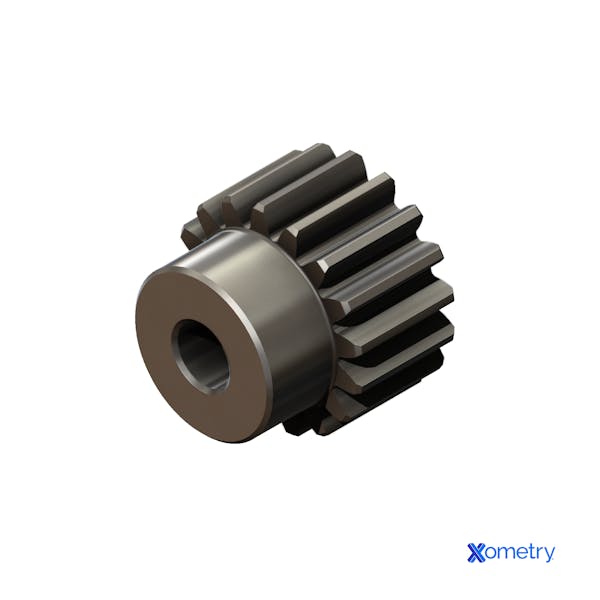
| Property | Description | Examples of Steels | Advantages | Applications |
|---|---|---|---|---|
Property Strength | Description Withstands high loads | Examples of Steels High-strength low-alloy (HSLA) steel | Advantages Strength | Applications Structural beams |
Property Ductility | Description Flexibility | Examples of Steels HD50 (High Ductility) | Advantages Easily shaped into various forms | Applications Ship hulls |
Property Corrosion resistance | Description Resistance to corrosion in various environments | Examples of Steels Stainless steels, such as 304 and 316 | Advantages Compatible with a wide range of fluids and environments | Applications Food and beverage processing, acidic environments |
Table 1: Steel Properties and Uses
| Property | Description | Examples of Steels | Typical Value Range | Units |
|---|---|---|---|---|
Property Hardness | Description Resistance to surface deformation | Examples of Steels Tool steel (D2) | Typical Value Range 200 - 1180 | Units Brinell hardness number (kg/mm2) |
Property Tensile Strength | Description Ability to withstand stretching loads | Examples of Steels Chromium vanadium steel (6150) | Typical Value Range 250 - 600 | Units MPa |
Property Thermal Conductivity | Description Transmission of heat | Examples of Steels Carbon steel (grade C1010) | Typical Value Range 15 - 45 | Units W/(m•K) |
Property Thermal Expansion | Description Change in volume with temperature | Examples of Steels Austenitic stainless steel (304, 316) | Typical Value Range 10 - 17 | Units 106m/(m•°C) |
Table 2: Steel Physical Properties
| Steel Type | Corrosion Resistance | Oxidation | Reactivity | Magnetic Properties | Stability |
|---|---|---|---|---|---|
Steel Type Carbon Steel | Corrosion Resistance Limited | Oxidation Significant, particularly in moist environments | Reactivity Reactive with oxygen | Magnetic Properties Magnetic | Stability Good |
Steel Type Tool steel | Corrosion Resistance Good | Oxidation Significant, particularly in moist environments | Reactivity Reactive with oxygen | Magnetic Properties Magnetic | Stability Good |
Steel Type Austenitic Stainless Steel (304, 316) | Corrosion Resistance Excellent | Oxidation Minimal, forms passive film | Reactivity Non-reactive (inert) generally | Magnetic Properties Non-magnetic | Stability Excellent |
Steel Type Martensitic Stainless Steel (410, 420) | Corrosion Resistance Excellent | Oxidation Minimal, forms passive film | Reactivity Non-reactive (inert) generally | Magnetic Properties Magnetic | Stability Excellent |
Table 3: Chemical Properties of Steel
Steel Types
There is a steel type out there for every kind of application you’re interested in, and they’re usually separated out by the types of alloys within their composition and how they’re processed.
1. Stainless Steel
This kind of steel will always have some level of chromium in it, and oftentimes nickel will be along for the ride too. Stainless steel is relied on for its corrosion and temperature resistance and its strength, whether that’s for large dairy milk tanks or food processing equipment. Here’s a part we made from stainless steel:

2. Carbon Steel
Carbon steel is one of the simplest steel alloys and usually gets broken out into three categories: high, medium, and low—ranging from 0.05% to 2% of carbon content. Depending how much carbon you have within it will influence how ductile, brittle, weldable, and strong it is, and it’s commonly called on for car and truck components and structures, as well as springs (pictured below).
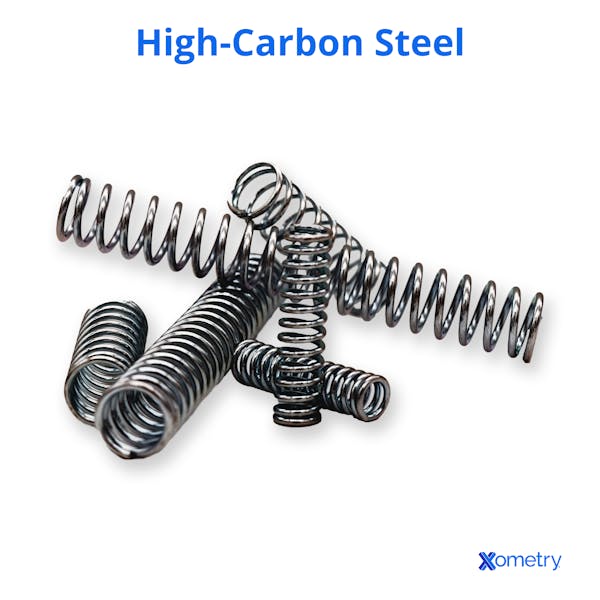
3. Alloy Steel
This points to steel compositions that have alloys aside from just carbon, like chromium, nickel, molybdenum, manganese, and silicon, to name a few. Alloy steel can have anywhere from 1–50% alloying elements, and there are two grades that determine each — low-alloy steel (under 8% of other elements) and high-alloy steel (above 8% other metals). The picture below shows different-sized alloy pipes.
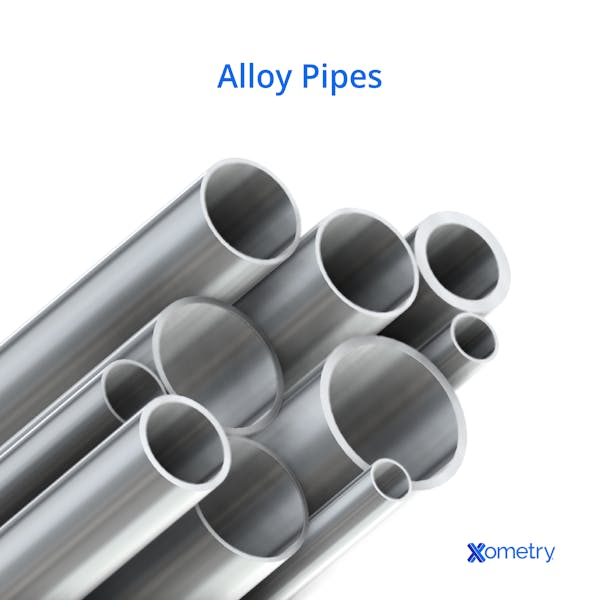

5. Weathering Steel
Products that are designed to stay outside, or spend a lot of time outdoors and subject to various weather conditions (not only rain and snow, but sun rays, too), are often made from this weathering steel. Its chromium, nickel, and copper help this weather-resistant metal form an oxidized layer to keep corrosion away.
6. Electrical Steel
With around 2–3.5% silicon in its composition, electrical steel is used by electricians and contractors for wiring, motors, transformers, and other electrical needs.
7. High-Speed Steel
While this is a type of tool steel, it’s particularly made for fast-moving power tools that can handle high pressure and speeds, and hot temperatures. To make it strong and durable, tungsten and molybdenum are included, and it is heat treated, too.
How Xometry Can Help
We frequently work with clients who are manufacturing and processing steel, and offer a list of services related to this material, including steel CNC machining, stainless steel laser cutting, stainless steel 3D printing, metal stamping, and die casting.
Disclaimer
The content appearing on this webpage is for informational purposes only. Xometry makes no representation or warranty of any kind, be it expressed or implied, as to the accuracy, completeness, or validity of the information. Any performance parameters, geometric tolerances, specific design features, quality and types of materials, or processes should not be inferred to represent what will be delivered by third-party suppliers or manufacturers through Xometry’s network. Buyers seeking quotes for parts are responsible for defining the specific requirements for those parts. Please refer to our terms and conditions for more information.


